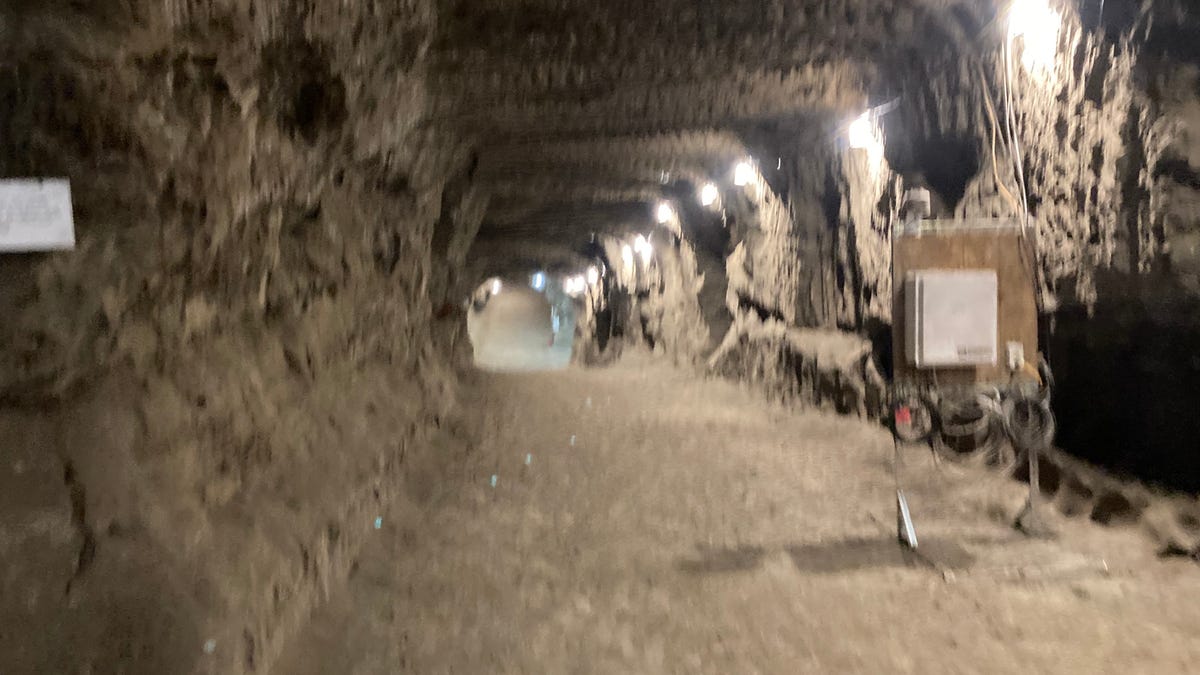Expect ‘more intense heatwaves’ as a result of climate change
Weather experts at the World Meteorological Organization said there is a link between extreme heatwaves happening across the globe and global warming.
Cody Godwin, Associated Press
WASHINGTON — Deadly pathogens lying dormant in centuries-old Arctic permafrost could become the latest threat from global climate change.
The potential release of the pathogens has seized the attention of federal government scientists, medical professionals and Pentagon officials. Pathogens – disease-causing organisms – have been trapped for centuries in frozen ground across the Arctic, including vast swaths of Alaska, Canada and Russia. Climate change has had a big impact on the far north, where temperatures have risen at two to four times the rate of the rest of the world.
The stakes are high.
Global warming has opened sea lanes in the Arctic, and increased competition from U.S. adversaries like China and Russia. In response, the Pentagon has been sending more troops and warplanes to Alaska. The military also conducts some of its largest-scale exercises in Alaska involving thousands of airmen, soldiers and sailors. Keeping them healthy is the Pentagon’s responsibility and a national security imperative.
Could hotter temperatures unleash a slew of microbes?
Warming temperatures across the globe could unleash a slew of microbes whose impact on humans, plants and animals is unknown.
“We know there’s bacterial, fungal and viral pathogens that are in permafrost,” said Jill Brandenberger, climate security research lead at the Pacific Northwest National Laboratory. “We know that upon thaw, all three of those classes of pathogens could be released. What we don’t know is how viable it is for them to stay alive and then infect.”
U.S. Northern Command, the Pentagon’s headquarters for protecting America from attack, acknowledged the potential threat in a statement to USA TODAY.
“We are collectively assessing the risks associated with the potential release of pathogens as a result of ice and permafrost melting due to the changing climate,” the statement said. “Some of the nation’s best scientists, medical professionals, and field operators are working together to advance our scientific understanding of what microbes melting permafrost may release and to enhance public understanding of what hazards this dynamic may pose.”
Worrying about unleashed pathogens sickening troops
The concern that pathogens unlocked from the ice could sicken troops drew researchers from across the government to a recent conference at Brandenberger’s laboratory, operated by a contractor for the Department of Energy’s Office of Science.
Permafrost covers 85% of Alaska and consist of soil and rock that stays frozen year-round. It can reach depths of 1,000 feet in the far northern parts of the state and thins into patches farther south. Just outside Fairbanks, the Army Corps of Engineers operates a research tunnel dug into permafrost. Inside, the dusty cavern the work of microbes is evident even in subfreezing temperatures. The cheesy odor of methane is evidence of microbes breaking down organic material.
Brandenberger, who has been advising the military on the effects of climate change for a decade, said the Pentagon has a keen interest in how pathogens could affect troops operating in the Arctic. While global warming has increased temperatures there, winters are still brutal with minus-50 below Fahrenheit readings at Fort Wainwright in Fairbanks still common. Soldiers coming from southern states could be particularly vulnerable.
“That might increase their ability to have symptoms from a pathogenic exposure where, say, an indigenous person who lived there wouldn’t express those same symptoms because they live there,” she said.
A research gap?
A key issue for officials is what Brandenberger terms “the research gap.” The current understanding of what harmful microbes exist, which ones might survive freeze-thaw cycles and how they could infect plants, and humans is limited. Most pathogens won’t survive, she said, but some may adapt.
“One of our major concerns is there’s so many unknowns,” Brandenberger said.
The permafrost has been stable for up to 1,000 years. What it could release was a key topic for permafrost experts, microbiologists, virologists, data scientists, oceanographers and clinicians at the conference in Seattle. Academics from the Center for Resilient Communities a University of Idaho, Carnegie Mellon and the University of Alaska Fairbanks also attended.
A further complication is that permafrost isn’t uniform. The thinner patches around Fairbanks, where Ft. Wainwright is located, are warmer and thaw faster. Heavier rains in summer have sped up the melting in that region. Identifying areas of permafrost more likely to be reservoirs of pathogens could provide the military with a “risk map.”
“Preferably, don’t go here,” she said of what a risk map could show. “If you go here, make sure you take all the protective measures, including bringing water.”
A thawing carcass of an animal
The hazard isn’t hypothetical. Branderberger noted evidence that the thawing carcass of an animal has released deadly anthrax. But she called instances like those “one-off, low-probability” events. There are also burial grounds with victims of smallpox and influenza across permafrost in the Arctic.
It unlikely that the next COVID-19 is waiting to be unlocked from the tundra, she said. A zombie bug that triggers the apocalypse isn’t her main worry.
For now, the urgency should be to learn more about what’s out there because it’s probable that a pathogen there will end up infecting a human, animal or plant.
“It is definitely probable, and we should be doing research,” Brandenberger said. “Is it a thing we need to freak about at the moment? We really need to focus on the more technical gaps in the science.”

Rachel Carter is a health and wellness expert dedicated to helping readers lead healthier lives. With a background in nutrition, she offers evidence-based advice on fitness, nutrition, and mental well-being.








